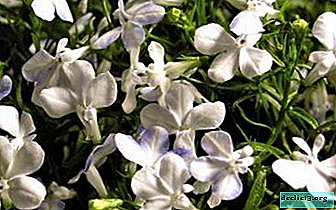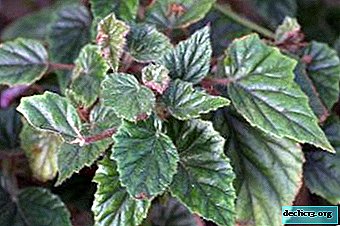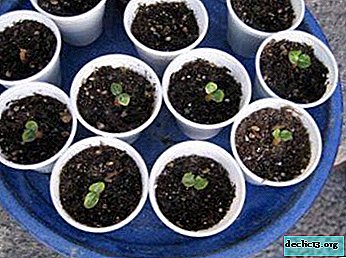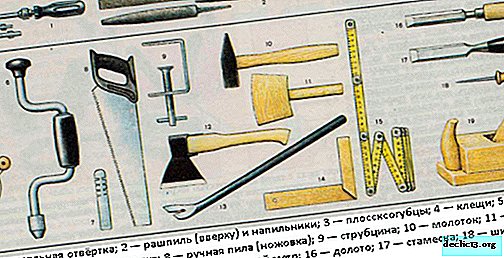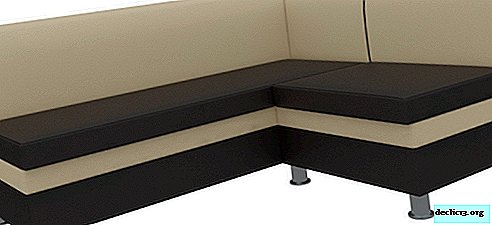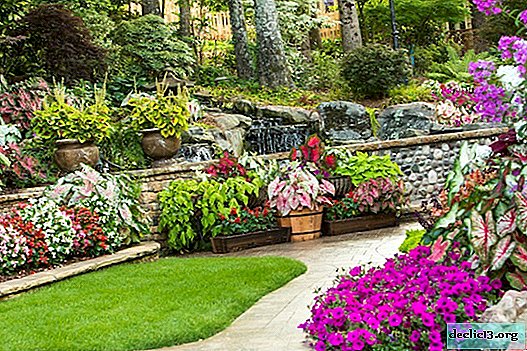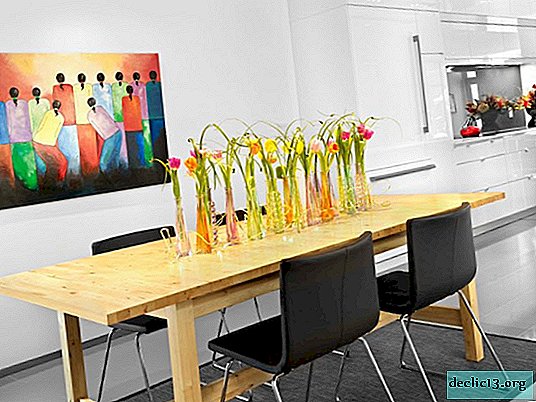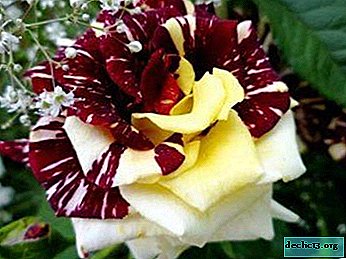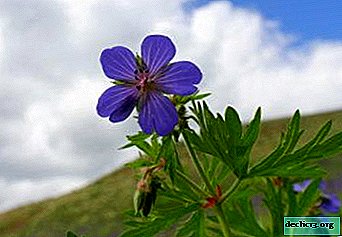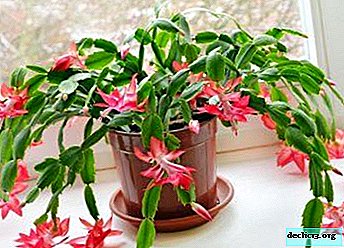Practical tips for growing and caring for the tropical beauty Hoya Obovata

Hoya Obovata - a tropical flower, natural varieties grow in Indonesia, India, Thailand. Habitat - moist woodlands.
The view was discovered at the end of 19 at the scientific Deken on Butung Island in southeastern Indonesia. A flower was introduced to Europe at the beginning of the 20th century. Hybrid flower varieties adapted to our regions, are well grown and propagated at home.
Next, we will tell in detail about the care of this flower: lighting, watering, the required temperature, top dressing. And also, we will tell about the methods of its reproduction.
Description of the species Hoya Obovata with photo
Variegata
The flower grows and develops very quickly.. The stems are large, twist well, and eventually acquire a light brown hue. The leaves are large, lobed, light green, in the middle of the leaf is a wide yellow - green strip. The leaves are voluminous, round, dense, shiny, up to 8 - 9 cm in diameter.
Additional leaves are light green, covered with a silver scattering of small spots. The flower itself is bunk, the base is milky white, the crown is bright raspberry. The main petals are pointed, slightly folded down, the crown has the shape of a five-pointed star.
On a note! The variegate variety of the flower has a tart, sweet aroma, emits transparent nectar, and blooms rapidly in May - early June.With proper care, flowering lasts several months. Forming pruning required. Propagated by cuttings in most cases.

Splash
The variety is very popular, grows not very fast. The stems are long, support is required to maintain the integrity of the root system. The stems are up to 0.5 cm in diameter, at the very beginning shoots of a reddish hue, then acquire a woody structure and a brown hue.
The leaves are thick, dense, fleshy, shiny, round in shape, up to 6 - 8 cm in diameter. The leaf plate is covered with silver spots - stains, leaf veins practically do not shine through. The inflorescences are lush, rounded in shape, combine 25-30 small flowers.
Five-pointed flowers, petals are pointed, pale pink. The crown of the flower is darker - saturated pink - raspberry shade. The flowers have a pronounced sweet aroma. Blooms profusely in late spring.
Important! Regular pruning of stems is required.To preserve variegated foliage bright lighting is required without direct sunlight .

Cultivation methods
Seeds
Note! Growing hoya Obovat in an apartment by flower growers is not practiced.In wet greenhouses, the variety propagates by seed sowing in the spring.
Seed Planting Procedure:
- Seeds are dried.
- Burlap or artificial fibers are added to the soil.
- Within 7-10 days, the seeds germinate.
- Seedlings are kept warm; additional lighting and regular watering are required.
- Seedlings are grown up to 3 months.
- When several leaves appear, seedlings are transplanted into pots.
Seed viability - 1 year.
Leaf
Hoya Obovata is grown by leaf, but the effectiveness of this method is quite low. The process is long, leaves of only maternal natural varieties are required. The process of propagation by leaves:
- Slices are processed by the root.
- The leaf should have a petiole.
- Leaves are planted in a light substrate at a slope of 45 °
- Good lighting required.
- The temperature of the sprout is up to 22 ° C.
Cuttings
Hoya Obovata propagated at home only by cuttings. The reproduction procedure is simple:
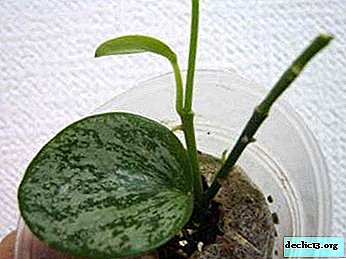 Cuttings cut 4 - 5 cm.
Cuttings cut 4 - 5 cm.- Cuttings are used, on which there are leaves and nodes.
- The pot is wrapped with foil - during germination, light should not enter the substrate.
- Cuttings are treated with root growth stimulant, are lowered into a sandy substrate.
- The pot is transferred to a warm place - 22 - 24 ° С.
- For the greenhouse effect, seedlings are covered with foil.
- After 2 weeks, roots appear.
You can use a simpler method of reproduction:
- It is necessary to put the cuttings in a dark, non-translucent container.
- Remove to heat - temperature up to 25 ° С.
- Daily spray with fine spray.
- Root hormone can be added to water.
Root germination occurs after 10 to 12 days.
The composition of the substrate for Hoya Obovat:
- Sod land - 1 h.
- Sheet land - 1 h.
- Peat - 4 hours
- Sand - 1 hour
- Humus - 1 hour
- Drainage is a mixture of sand, expanded clay, clay shards.
Care
Temperature
The variety is heat-loving, does not tolerate drafts and sudden changes in temperature. In summer, the optimum temperature is 18 - 25 ° C. Regular spraying is required to lower air temperature and increase humidity. In the autumn-winter period, Khoya Obovata enters a state of rest, the optimum temperature is 12 - 15 ° C.
Avoid hypothermia of the flower; temperatures below 10 ° C are detrimental to this variety.
Watering
Do not allow the soil to dry out even in winter. Watering should be after drying of the upper layer of the substrate. In summer, regular watering is required in small doses, preferably daily spraying, once a week you should wipe the leaves from dust with a wet swab.
Note! It should be watered with warm, purified or settled water. To reduce the hardness of the water, add a little moss - sphagnum to the water.Shine
Hoya Obovata prefers bright places, but in summer, southern windows should be shaded so that direct sunlight does not fall on the leaves.
From an excess of light, the sheet plate loses its brightness, burns, pigmented brown spots may appear. Also, the flower does not like frequent movements, changes in the light regime, exot can suspend flowering or discard leaves.
Pruning
 For good growth, the plant must trim long stems. The procedure is usually performed in early spring.
For good growth, the plant must trim long stems. The procedure is usually performed in early spring.
Hoya Obovata grows fast enough, this variety requires an annual update - pruning and pinching of new sprouts.
After trimming the long stems, lateral buds appear, the flower becomes denser, the flowering is more magnificent and bright.
The peduncle itself is not recommended to be removed, new inflorescences are developing on it.
Top dressing
During growth and flowering, Obovata hoyu needs to be fed with complex mineral fertilizers. Top dressing for blooming succulent flowers is usually used. From March to the end of August, regular top dressing is applied once every 2 weeks. Fertilizers are added to water for irrigation. When using universal dressings, the dosage must be strictly observed, especially for young flowers.
Pot
Pots, flowerpots, hanging flowerpots should not be too big, you should definitely make drainage holes for the outflow of excess water and air access. Before planting, the pots are treated with boiling water or other disinfectants. At the bottom, a drainage layer is necessarily laid out - broken brick, expanded clay or pebbles.
Important! In one pot, several seedlings are usually planted for density. Long stems must have a reinforcing support so that the roots are not damaged by the weight of the bulk stems.Briefly about the diseases characteristic of this flower
Hoya Obovata does not tolerate stagnation of moisture, raw substrate. With improper care, root and stem rot appear. Especially in the winter. In this case, treatment of the bush is required - treatment with a fungicide.
To prevent fungus and other infections, soil and leaves should be treated with a solution of Bordeaux fluid or other fungicides.
In the summer, the flower should be washed under a warm shower, you can just wipe the leaves from dust with a cotton swab. After a shower, it is better to wipe off excess water so that the water does not stagnate in the sinuses.
A flower can be affected by various garden pests:
- scabbard;
- spider mite;
- whitefly or aphids.
First aid - leaf treatment with soap and water. Pests are cleaned manually with a wet swab. It can be treated with an alcohol solution.
Hoya Obovat is unpretentious, it takes a little to grow quickly - moderate watering, renewal, proper soil and gentle care, then gentle lush flowering can last several months.

 Cuttings cut 4 - 5 cm.
Cuttings cut 4 - 5 cm.